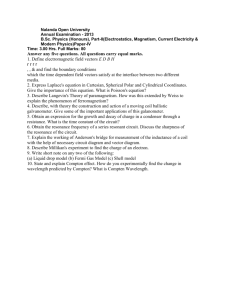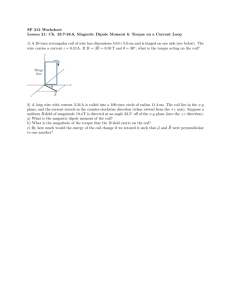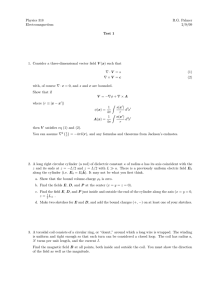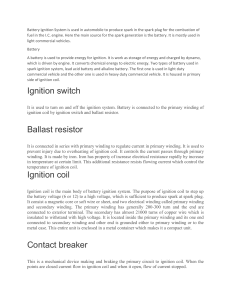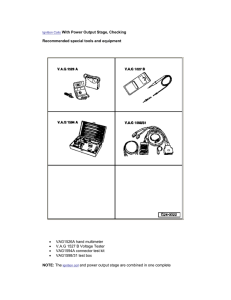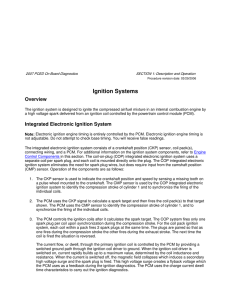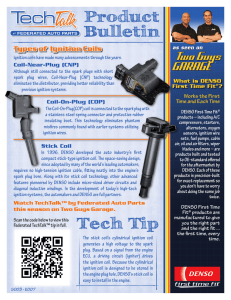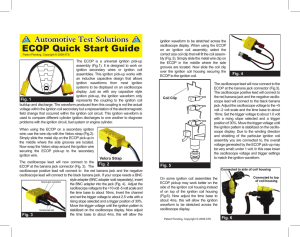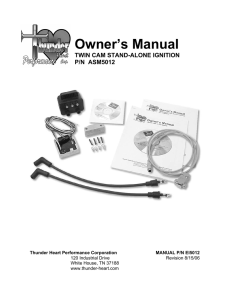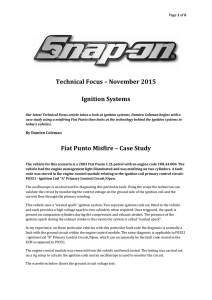Air Ionizer & Solar LED Lantern Circuit Ideas
advertisement
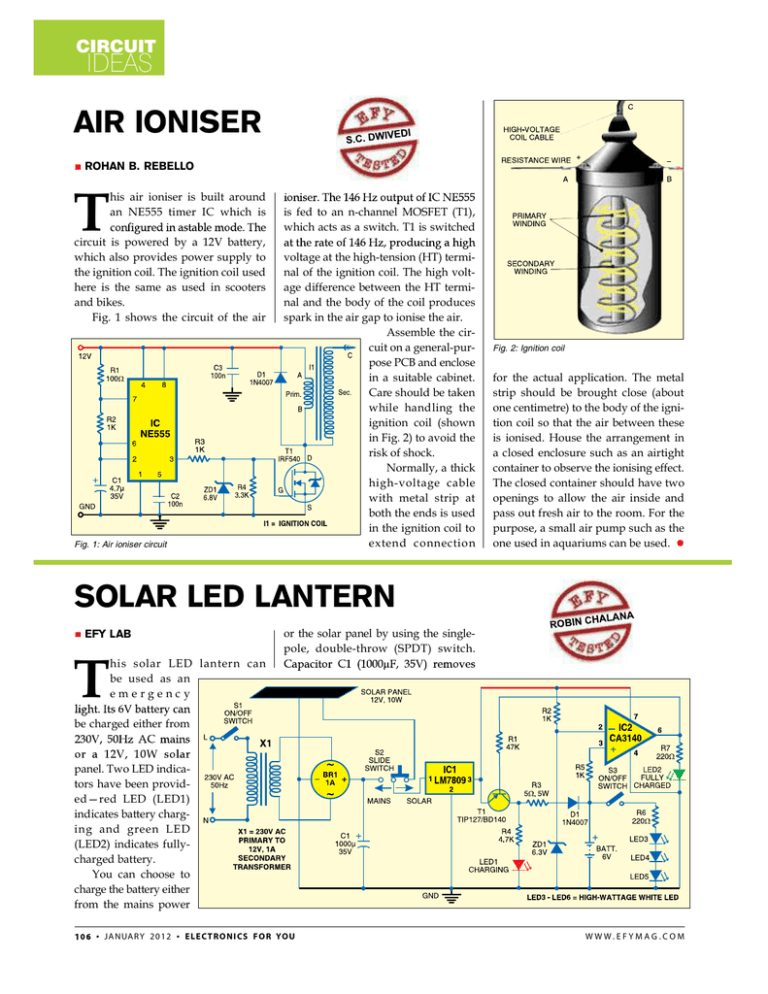
CIRCUIT IDEAS AIR IONISER ROHAN B. REBELLO T his air ioniser is built around an NE555 timer IC which is circuit is powered by a 12V battery, which also provides power supply to the ignition coil. The ignition coil used here is the same as used in scooters and bikes. Fig. 1 shows the circuit of the air Fig. 1: Air ioniser circuit is fed to an n-channel MOSFET (T1), which acts as a switch. T1 is switched voltage at the high-tension (HT) terminal of the ignition coil. The high voltage difference between the HT terminal and the body of the coil produces spark in the air gap to ionise the air. Assemble the circuit on a general-purpose PCB and enclose in a suitable cabinet. Care should be taken while handling the ignition coil (shown in Fig. 2) to avoid the risk of shock. Normally, a thick high-voltage cable with metal strip at both the ends is used in the ignition coil to extend connection SOLAR LED LANTERN EFY LAB T his solar LED lantern can be used as an emergency be charged either from panel. Two LED indicators have been provided—red LED (LED1) indicates battery charging and green LED (LED2) indicates fullycharged battery. You can choose to charge the battery either from the mains power or the solar panel by using the singlepole, double-throw (SPDT) switch. Fig. 2: Ignition coil for the actual application. The metal strip should be brought close (about one centimetre) to the body of the ignition coil so that the air between these is ionised. House the arrangement in a closed enclosure such as an airtight container to observe the ionising effect. The closed container should have two openings to allow the air inside and pass out fresh air to the room. For the purpose, a small air pump such as the one used in aquariums can be used.

